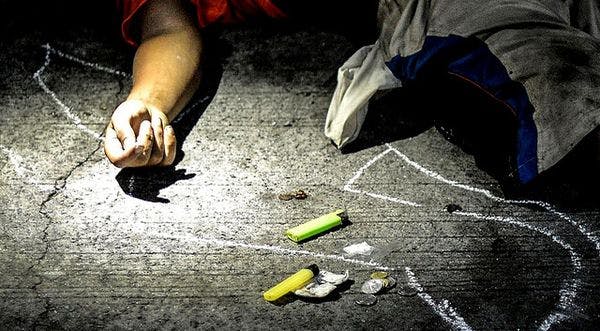This is where they do not die: An investigation into the Philippines war on drugs
By Patricia Evangelista
Everyone knows the story. There is the body, there is the bullet, there is the man who will alternately be called addict or suspect or junkie or pusher or dealer, allegedly or otherwise, depending on who tells the story.
“We will not stop,” said President Rodrigo Duterte, “until the last drug lord… and the last pusher have surrendered, or are put either behind bars or below the ground, if they so wish.”
This is Quezon City, millions strong, sprawling over more than 16,000 hectares, the largest in Metro Manila and the most populated of the country's highly urbanized cities. Two former presidents still live inside its borders, along with a handful of senators and the grandchildren of the late Commonwealth president Manuel L. Quezon, in whose imagination bloomed the vision of a graceful capitol in the city that now carries his name. It is also the city where at least 511 people were recorded killed during the first seven months of Duterte's drug war.
Project Double Barrel went into effect in July of 2016. The leadership went to the police, who were promised protection by the President as long as "you do your duty." The daily broadcasts ran footage of wailing mothers, while corpse after corpse filled the feeds of night shift reporters until operations were suspended in January.
Rappler reviewed police spot reports for 368 incidents of deaths under investigation and fatal armed encounters in Quezon City between July 1, 2016 and January 30, 2017, the first seven months of Project Double Barrel and Barrel Alpha. The reports were accessed at the Criminal Investigation and Detection Unit at the Quezon City Police District (QCPD) headquarters after a request for all reports filed between June 2016 and January 2017.
A request for later reports within the time frame of the drug war's second onslaught was initially approved by the QCPD. It was subsequently denied by higher authorities, who cited “ongoing investigations.”
A spot report is filed in the immediate aftermath of an incident, and includes the date, time, and type – whether it was a stabbing or a shooting, whether it was a police operation or a corpse left by the side of the road, whether the dead were drug suspects or unidentified. It includes the facts of the case as determined by the police. It lists the police personnel present, whether responding or involved, as well as possible perpetrators. When available, the addresses and names of suspects killed are included, as well as the place of incident.
Quezon City's dead fall into two categories. The first are the deaths under investigation. The perpetrators are listed as largely unknown. Some of the bodies were found in street corners and alongside highways, garroted with galvanized wire or stabbed in the chest, faces sometimes wrapped in duct tape, with crystal meth in their pockets and signs calling them addicts or dealers. Others were shot point-blank by riding-in-tandem assailants, or murdered by masked men as they watched television inside shanties.
Although it cannot be categorically said that the victims were involved in drugs, some were on drug watch lists, while a number of others had already surrendered to local authorities.
Rappler identified 216 deaths under investigation in a review of QCPD spot reports. Joy Belmonte, the Vice Mayor of Quezon City, under whose office the anti-illegal drug campaign falls, admitted she was alarmed by the sudden rise of killings. She cautioned against seeing the trend "from a black and white perspective."
Some of the dead, she said, were probably uninvolved in drugs but were targeted because "of the opportunity" to kill with impunity. Others were possible informants murdered by corrupt policemen she called "ninja cops." Still others were victims of vigilante killings.
Click here to read the full article.
Thumbnail: Flickr CC Talk Pinas
